The Last of England is a British film of genre Drama directed by Derek Jarman with Tilda Swinton
The Last of England (1989)
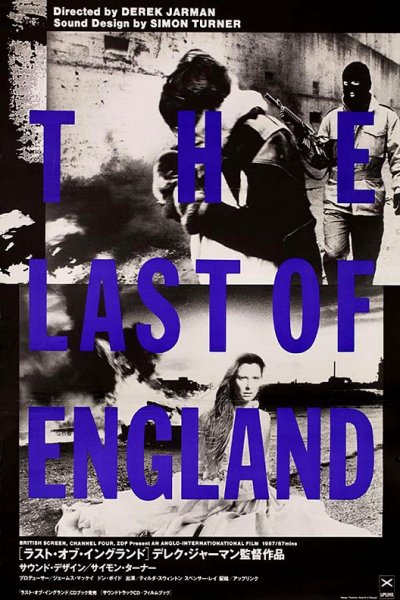
If you like this film, let us know!
Length 1h32
Directed by Derek Jarman
OriginUnited-kingdom
Themes Films about magic and magicians, Films about sexuality, LGBT-related films, LGBT-related films, LGBT-related film
Rating64%










The Last of England is a 1988 British film directed by Derek Jarman.
It is a poetic, rather than realistic, depiction of what Jarman felt was the loss of traditional English culture in the 1980s. It is named after a painting by the Pre-Raphaelite artist Ford Madox Brown.
Jarman wrote a book to accompany the film, which deals more explicitly with the relationship he had with his father, who was a Lancaster bomber pilot in the Second World War. Jarman used the impact of his father's despair, depression and violence on his own artistic vision. The depression that his father suffered is attributed to the high number of fatalities that bomber crews experienced and the carpet-bombing of civilians. The film is also a means to explore his vision of the dissolution of traditional (pre-war) English life. (See his earlier film Jubilee to contextualize it with the 1977 punk movement of the time).
The book and to a lesser extent the film are very much in the tradition of Roland Barthes Camera Lucida, Susan Sontag's On Photography, Jeanette Winterson's 'Art Objects' and to a lesser extent John Berger's Ways of Seeing in that he has used the deeply familiar and personal as a vehicle for dialogue about art and contemporary culture.
Derek Jarman received the 1988 Teddy Award in Berlin for the film.
Synopsis
Composé majoritairement d’archives familiales du cinéaste, complétées d’images de ruines et de décadence, The Last of England, d’une actualité stupéfiante, dénonce la médiocrité d’une société, l’Angleterre ultra-libérale de Thatcher, dans une vision futuriste et altruiste où violences politiques, sociales et psychologiques sont intimement mêlées.Actors

Tilda Swinton
(The Maid)

Nigel Terry
(Narrator (voice))

Jonny Phillips
(Various roles (as Jonathan Phillips))

Spencer Leigh
(Soldier / Various roles)
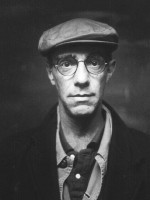
Derek Jarman
(Himself (uncredited))
Comments
Leave comment :
Suggestions of similar film to The Last of England
There are 67 films with the same actors, 12 films with the same director, 65672 with the same cinematographic genres (including 2200 with exactly the same 2 genres than The Last of England), 8583 films with the same themes (including 36 films with the same 5 themes than The Last of England), to have finally 70 suggestions of similar films.If you liked The Last of England, you will probably like those similar films :
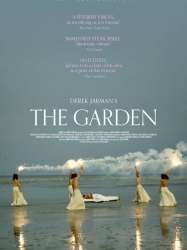
The Garden (1990)
, 1h32Directed by Derek Jarman
Origin United-kingdom
Genres Drama
Themes Films about sexuality, LGBT-related films, LGBT-related films, LGBT-related film
Actors Tilda Swinton, Spencer Leigh, Michael Gough, Philip MacDonald, Pete Lee-Wilson, Jack Birkett
Rating63%





Une femme, peut-être la Madone, apporte son bébé à une foule de paparazzi intrusifs ; elle veut fuir. Deux amants homosexuels se marient et sont arrêtés par les forces de l'ordre. Ils sont humiliés et battus. Égarés dans ce monde contemporain où Jésus est encore fort présent, il faut pouvoir survivre à l'intolérance et le meurtre.
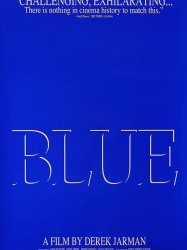
Blue (1993)
, 1h19Directed by Derek Jarman
Origin United-kingdom
Genres Drama, Documentary, Musical
Themes Medical-themed films, Films about sexuality, LGBT-related films, LGBT-related films, HIV/AIDS in film, LGBT-related film
Actors Nigel Terry, Derek Jarman, Tilda Swinton
Rating72%





Un écran uniformément bleu. En voix off, des comédiens disent des poèmes et des textes tandis que Derek Jarman lit le journal intime de sa maladie, décrit les traitements contre le sida, cite la presse…
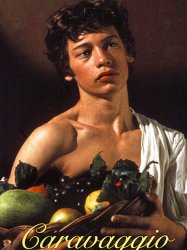
Caravaggio (1986)
, 1h33Directed by Derek Jarman
Origin United-kingdom
Genres Drama, Biography, Historical, Romance
Themes Peinture, Films about sexuality, LGBT-related films, LGBT-related films, LGBT-related film
Actors Nigel Terry, Sean Bean, Tilda Swinton, Robbie Coltrane, Jack Birkett, Nigel Davenport
Rating64%





Told in a segmented fashion, the film opens as Caravaggio (Nigel Terry) dies from lead poisoning while in exile, with only his long-time deaf-dumb companion Jerusaleme (Spencer Leigh) (who was given by his family to the artist as a boy) by his side. Caravaggio thinks back to his life as a teenage street ruffian (Dexter Fletcher) who hustles and paints. While taken ill and in the care of priests, young Caravaggio catches the eye of Cardinal Del Monte (Michael Gough). Del Monte nurtures Caravaggio's artistic and intellectual development but also appears to molest him.
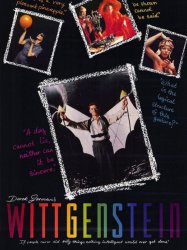
Wittgenstein (1993)
, 1h15Directed by Derek Jarman
Origin United-kingdom
Genres Drama, Biography, Comedy, Comedy-drama, Historical
Themes Films about sexuality, Bisexuality-related films, LGBT-related films, LGBT-related films, LGBT-related film
Actors Kevin Collins, Nabil Shaban, Michael Gough, Tilda Swinton, Jill Balcon
Rating68%





Le film retrace la pensée et la vie du philosophe autrichien Ludwig Wittgenstein au travers de différentes saynètes.
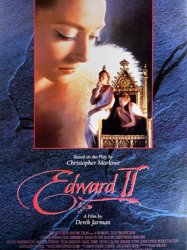
Edward II (1991)
, 1h30Directed by Derek Jarman
Origin United-kingdom
Genres Drama, Historical, Romance
Themes Films about sexuality, Théâtre, Bisexuality-related films, LGBT-related films, Films based on plays, LGBT-related films, LGBT-related film
Actors Steven Waddington, Tilda Swinton, Andrew Tiernan, Kevin Collins, Dudley Sutton, Jerome Flynn
Rating67%





Once installed as king, Edward II summons his friend and lover, Piers Gaveston, to his side and showers him with gifts, titles and abiding love. Their relationship is fiery and passionate, but it is the focus of gossip and derision throughout the kingdom. Upon his return, Gaveston takes revenge on the Bishop of Winchester, who had been responsible for his banishment from England during the previous reign, by personally torturing him. Kent, Edwards’ brother, is the first to protest Gaveston's return. Many others feel the same way, including the Bishop of Winchester and Lord Mortimer, who is in charge of the army forces of the kingdom. Nevertheless, Edward defends his lover from his mounting enemies.
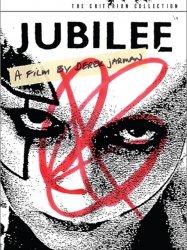
Jubilee (1978)
, 1h40Directed by Derek Jarman
Origin United-kingdom
Genres Drama, Science fiction, Comedy, Comedy-drama, Fantasy, Musical
Themes Films about magic and magicians, Films about music and musicians, Films about sexuality, LGBT-related films, Musical films, LGBT-related films, LGBT-related film
Actors Jenny Runacre, Ian Charleson, Nell Campbell, Toyah Willcox, Richard O'Brien, Sam Spruell
Rating59%





In Jubilee, Queen Elizabeth I (Jenny Runacre) is transported forward in time by the occultist John Dee (Richard O'Brien) through the spirit guide Ariel (a character from Shakespeare's The Tempest). Elizabeth arrives in the shattered Britain of the 1970s. Queen Elizabeth II is dead, killed in an arbitrary mugging, and Elizabeth I moves through the social and physical decay of the city observing the activities of a group of sporadic nihilists, including Amyl Nitrite (Jordan), Bod (Runacre in a dual role), Chaos (Hermine Demoriane), Crabs (Nell Campbell), and Mad (Toyah Willcox).

The Tempest (1979)
, 1h32Directed by Derek Jarman
Origin United-kingdom
Genres Drama, Fantasy
Themes Films about sexuality, Théâtre, LGBT-related films, Films based on plays, Films based on works by William Shakespeare, LGBT-related films, LGBT-related film
Actors Heathcote Williams, Peter C. Bull, Toyah Willcox, Jack Birkett, Richard Warwick, Claire Davenport
Rating63%





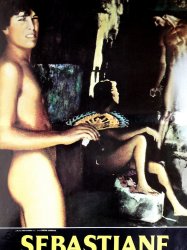
Sebastiane (1976)
, 1h26Directed by Derek Jarman
Origin United-kingdom
Genres Drama
Themes Films set in Africa, Films about religion, Films about sexuality, LGBT-related films, LGBT-related films, LGBT-related film
Actors Barney James, Richard Warwick, Lindsay Kemp, Peter Hinwood, Philip Sayer, Nell Campbell
Rating62%





In the fourth century CE, Sebastiane is a member of the Emperor Diocletian's personal guard. When he tries to intervene to stop one of the Emperor's catamites from being strangled by one of his bodyguards, Sebastiane is exiled to a remote coastal garrison and reduced in rank to private. Although thought to be an early Christian, Sebastiane is a worshipper of the Roman sun god Phoebus Apollo and sublimates his desire for his male companions into worship of his deity and pacifism. Both incense Severus, the commanding officer of the garrison, who becomes increasingly obsessed with Sebastiane, tries to assault him, and ultimately presides over his summary execution for refusing to take up arms in defence of the Roman Empire. Justin, one of his comrades in arms, is also in love with Sebastiane, albeit necessarily unrequited, but he forms a friendship with the stubborn celibate pacifist. Adrian and Anthony, two of Sebastian's fellow soldiers, are gay and in obvious love with one another.

The Angelic Conversation (1985)
, 1h18Directed by Derek Jarman
Origin United-kingdom
Genres Drama, Romance
Themes Films about sexuality, LGBT-related films, LGBT-related films, LGBT-related film
Actors Paul Reynolds, Judi Dench
Rating61%





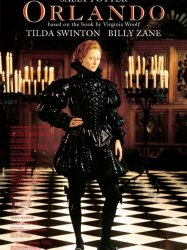
Orlando (1992)
, 1h33Directed by Sally Potter
Origin United-kingdom
Genres Drama, Science fiction, Fantasy, Historical, Romance
Themes Feminist films, Films about sexuality, LGBT-related films, Transgender in film, Political films, LGBT-related films, Films about royalty, LGBT-related film
Actors Tilda Swinton, Billy Zane, Quentin Crisp, Lothaire Bluteau, John Wood, Charlotte Valandrey
Rating70%





The film begins in the Elizabethan era shortly before the death of Queen Elizabeth I. On her deathbed, Elizabeth promises an androgynous young nobleman named Orlando a large tract of land and a castle built on it along with a generous monetary gift which she will only bequeath to him if he consents to her command, "Do not fade. Do not wither. Do not grow old." Both he and his heirs will keep the land and inheritance forever. Orlando acquiesces and resides in splendid isolation in the castle for a couple of centuries, during which time he dabbles in poetry and art. His attempts to befriend a celebrated poet, however, backfire when the poet ridicules his verse. Orlando then travels to Constantinople as British ambassador to the Turks, but he is almost killed in a diplomatic fracas there. Waking up the next morning, he learns something even more startling: he has physically transformed into a woman overnight.
 Connection
Connection